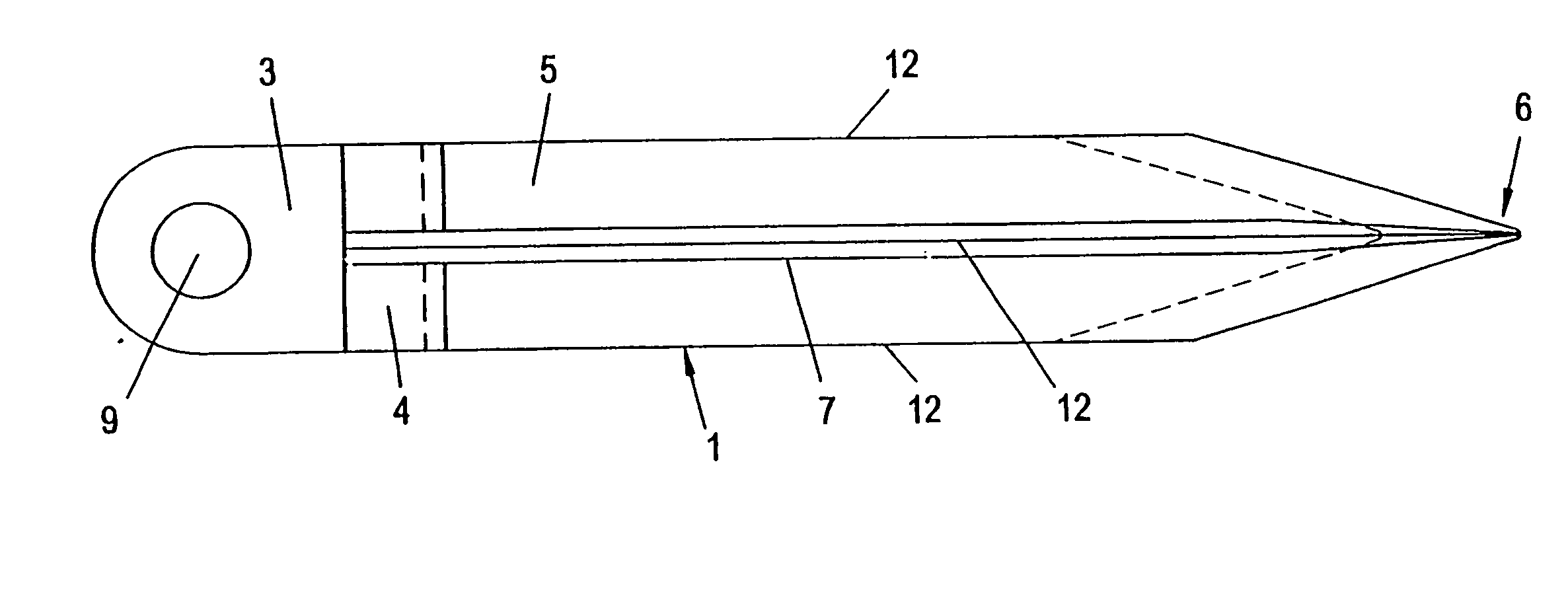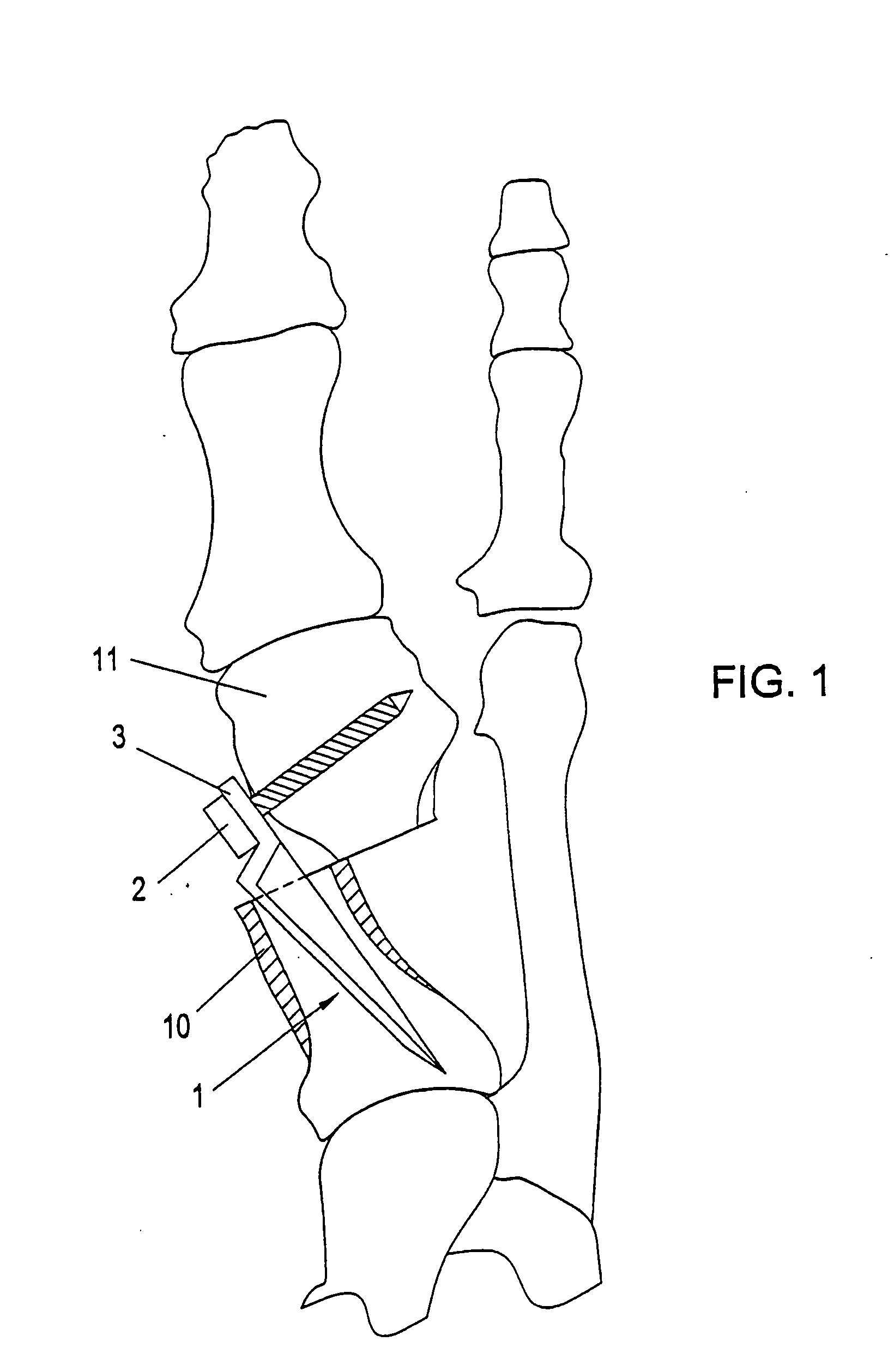Implant for the dynamic fixation of a corrective osteotomy
a dynamic fixation and osteotomy technology, applied in the field of implants for corrective osteotomy, can solve the problems of difficult insertion of braces, inability to completely rotate stable fixation of bone fragments, and stress on the foot, so as to improve the healing progress, simplify the handling, and enhance the growth of bone formation
- Summary
- Abstract
- Description
- Claims
- Application Information
AI Technical Summary
Benefits of technology
Problems solved by technology
Method used
Image
Examples
Embodiment Construction
[0025] A way of surgically correcting halux valgus consists in separating the malaligned metatarsal I and fixing same in the corrected position. In FIG. 1, such a fixation by the aid of the implant according to FIG. 2 is illustrated. After having separated the bone, the anchoring shaft 1 with the sharpened drive-in end is driven into the marrow space of the bone fragment 10 until the crank comes to lie on the level of the osteotomy. After this, the second bone fragment 11 is fixed to the fixing section 3 by the aid of a spongiosa screw 1. The implant enables a corrective osteotomy that is stable in the frontal and transverse planes as well as in terms of rotation and which allows for the dynamic compression of the bone fragments in the axial direction. The implant stands out for its high static stability. Fracture during explantation need not be feared.
[0026]FIG. 2 illustrates an embodiment of the implant from the side. The implant is comprised of an anchoring shaft 1, which is con...
PUM
 Login to View More
Login to View More Abstract
Description
Claims
Application Information
 Login to View More
Login to View More - R&D
- Intellectual Property
- Life Sciences
- Materials
- Tech Scout
- Unparalleled Data Quality
- Higher Quality Content
- 60% Fewer Hallucinations
Browse by: Latest US Patents, China's latest patents, Technical Efficacy Thesaurus, Application Domain, Technology Topic, Popular Technical Reports.
© 2025 PatSnap. All rights reserved.Legal|Privacy policy|Modern Slavery Act Transparency Statement|Sitemap|About US| Contact US: help@patsnap.com



